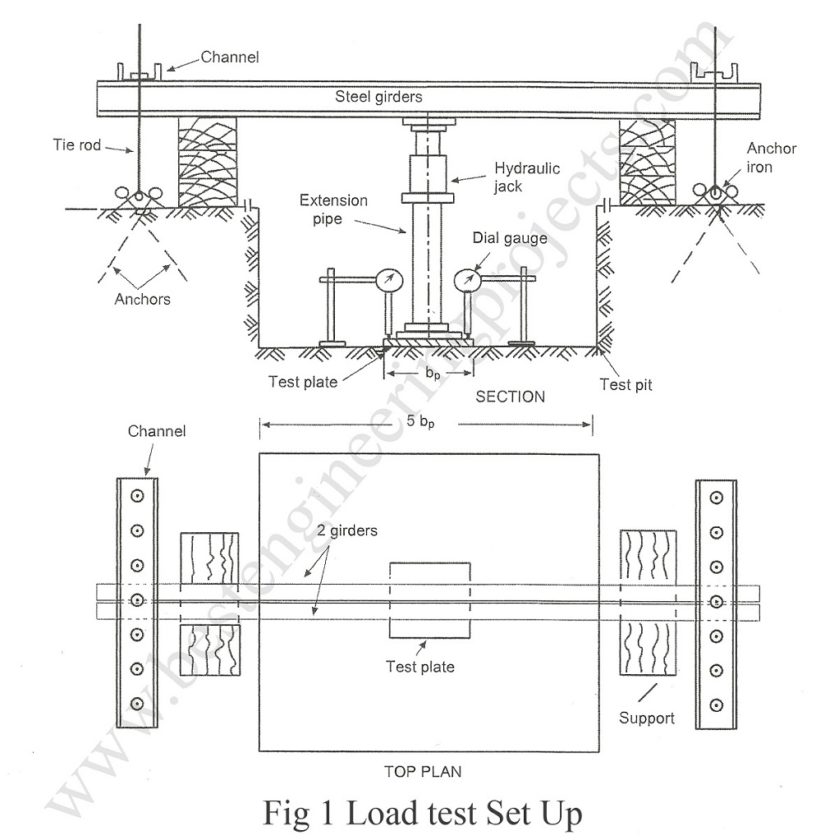What is plate load test?
in this article we will discuss about Plate Load Test Procedure and Limitation. The general set up for the plate load test is shown in Fig.1 below. Plate load test enables to estimate the allowable pressure of soil. The plates used in this particular phenomenon are usually square or round and these plates vary in sizes from 30 to 60 cm width and thickness about 2.5 cm.
In comparison to other tests, Plate load tests are found to be quite expensive. Plate load test is most suited for sands and clay’s. In sand, they are usually carried out when the project is big and large numbers of footings are available. In clay, where unconfined compression tests are not feasible due to presence of fissures and cracks, plate load tests are used to determine the ultimate bearing capacity.
The test procedure of plate load test is as follows:
A pit 5 times the size of plate is excavated at the proposed depth of foundation to build the set up for plate load test. The pit is leveled and the test plate is placed at the center of the pit as shown in the top plan of fig.1.
- A seating load of 70 gm/cm2 is applied and released after some time.
- The plate is loaded either through a kentledge or by the reaction through a truss or a beam.
- The load is applied in the increments of 1/5th of the design load or 1/10th of failure load.
- For each increment of load four dial gauges are on the plate to measure the settlement.
- Next higher load is applied when the rate of settlement of the plate becomes 0.25 mm per hour.
The test is simultaneously carried out until failure or to a load two and half times the design load, whichever is earlier.
Limitation–
The plate load test has multiple advantages. On the other hand, it has some disadvantages as well. The result of plate load test is reliable only in the case of homogeneous sand deposit.
In case of stratified deposit, the results of plate load test are misleading because the plate load test provides strength and deformation characteristics of soils within the pressure bulb of the plate only. For instance, there are two layers of soils as shown in Fig.1. below.
The top layer is stiff clay while the bottom layer is the soft clay. If the plate load test is conducted close to the ground surface, it only measures the characteristics of the stiff clay but does not indicate the characteristics of the underlying soft clay. The actual foundation of a building however has the pressure bulb, which extends well below the soft clay, which is very compressible. If due care is not taken the results of the plate load test could lead the design to unsafe side. Therefore, plate load test is not suited for stratified deposits.
Considering the time factor, the plate load test is a short duration test. Hence, it does not provide the consolidation settlement characteristics of clay soil. The test provides only the immediate settlement of the soil. Therefore, the results of load test are not reliable in clayey soils.
If the position of Water table is close to the level of the foundation, the load test should be conducted at the position of the water table. If it is carried out above the water table, it is significantly affected by capillarity and buoyancy. The results of such test will be highly misleading and provide unsafe design.

